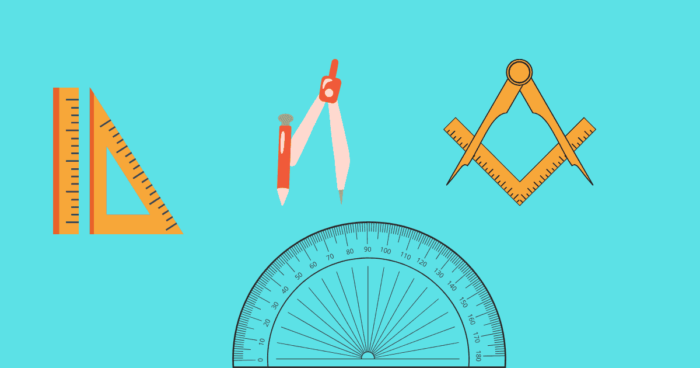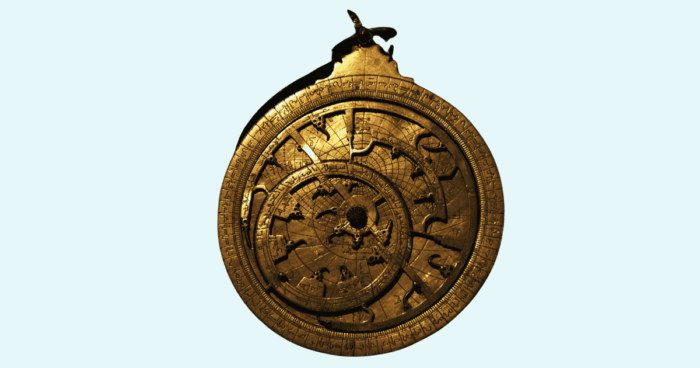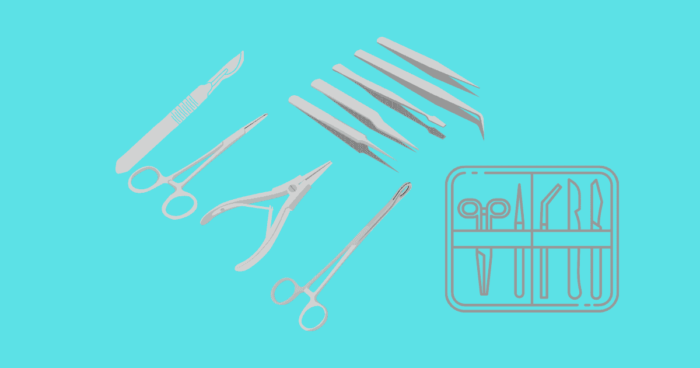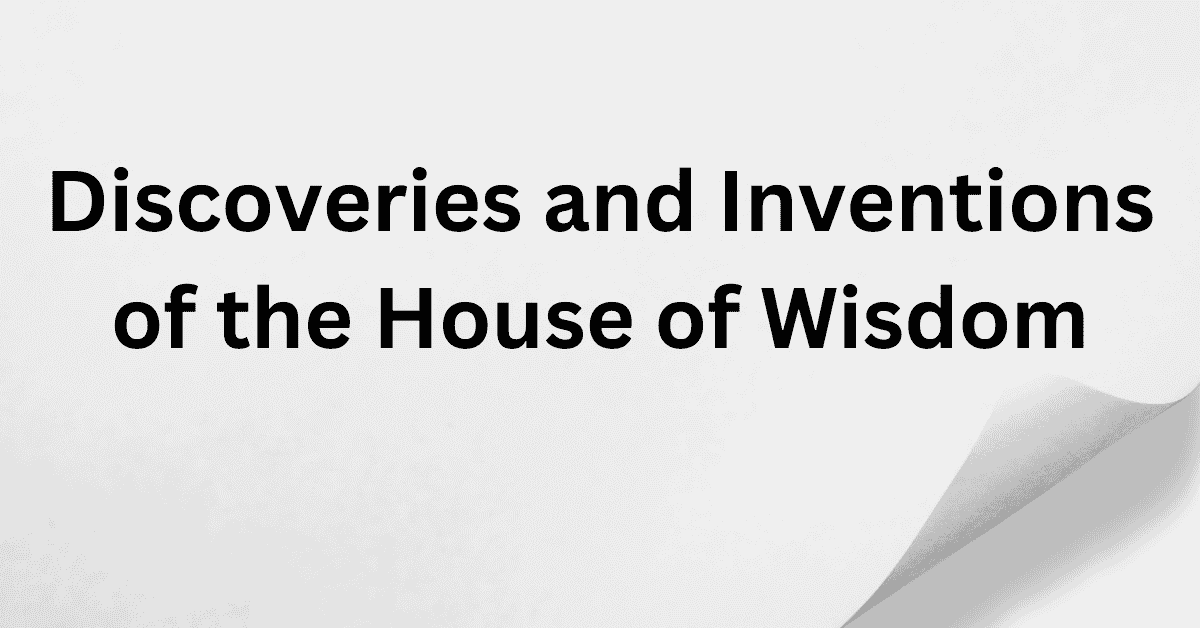Here the scholars of all nations and creeds gathered to translate, debate, and innovate in doing so, they paved the way for the Renaissance.
The House of Wisdom, founded in the 9th century by Caliph Harun al-Rashid and later expanded by his son Al-Ma’mun, was more than just a library or a translation center. It was the driving force behind the Islamic Golden Age. Here, pivotal discoveries, inventions, and innovations across fields such as mathematics, astronomy, medicine, and engineering were made, propelling human knowledge forward. It played a vital role in preserving the knowledge of ancient civilizations and advancing it with new innovations, serving as a foundation for later developments in the Renaissance and the modern world.
There is an extensive list of the House of Wisdom’s discoveries, inventions, and innovations. While it’s nearly impossible to cover all of them in a single article, I will strive to highlight the most important ones.
Discoveries of the House of Wisdom
Discovery: Discovery refers to the process of finding or uncovering something, such as knowledge, concepts, or phenomena that previously existed but were unknown.
The House of Wisdom became an intellectual powerhouse where some of the most groundbreaking discoveries across various disciplines were made. Scholars worked tirelessly to not only translate knowledge from Greek, Syriac, Persian, and Indian sources but also enhance and expand upon it, creating entirely new fields of study. Below are some of the key discoveries made in the House of Wisdom.
Mathematical Discoveries
One of the most enduring contributions from the House of Wisdom was in the field of mathematics. The scholars here pioneered new ways of understanding numbers and solving complex problems, laying the groundwork for modern-day mathematics.
Algebra: The term “algebra” itself comes from the Arabic word al-jabr, introduced by the mathematician Al-Khwarizmi, who worked at the House of Wisdom. His influential book, “Al-Kitab al-Mukhtasar fi Hisab al-Jabr wal-Muqabala,” (Arabic: الكتاب المختصر في حساب الجبر والمقابلة The Compendious Book on Calculation by Completion and Balancing), presented the first systematic solution of linear and quadratic equations. Al-Khwarizmi’s work was so influential that it not only introduced algebra to the Western world but also revolutionized mathematics globally.

Geometry and Trigonometry: Scholars at the House of Wisdom made significant advancements in geometry and trigonometry, building on the works of Greek mathematicians Euclid and Archimedes. They developed precise mathematical techniques to measure distances and angles, which were later applied to architecture, astronomy, and navigation. For example, Thabit ibn Qurra, a prominent mathematician at the House, made substantial contributions to the understanding of geometrical figures and trigonometric functions.

Calculus Precursors: While modern calculus was not fully developed during the Islamic Golden Age, scholars like Ibn al-Haytham laid the foundation for its later emergence through his work on optics and infinitesimals. His pioneering work in analytical geometry would influence later scholars in both the Islamic world and Europe.
Astronomical Discoveries
The House of Wisdom was a hub for work in astronomy. Scholars tirelessly observed the heavens, cataloging stars and developing new ways to understand the cosmos. The Baghdad Observatory (Al-Shammisiyya Observatory), established under Abbasid Caliph Al-Ma’mun, played a crucial role in advancing these astronomical studies. Scholars used the observatory’s advanced instruments to observe planetary movements, refine celestial calculations, and map out star catalogs that surpassed earlier works.
Cataloging New Stars: The astronomers of the House of Wisdom, such as Abd al-Rahman al-Sufi, built upon the star catalogs of ancient Greek astronomers like Ptolemy. Al-Sufi’s Book, “The Book of Fixed Stars,” provided corrections to Ptolemaic models and introduced several newly discovered stars and constellations.
Planetary Movements and Orbits: Islamic astronomers like Al-Battani refined the understanding of planetary movements, leading to more accurate calculations of celestial orbits. Al-Battani’s work on the motion of the Sun and the Moon helped lay the groundwork for future advancements in astronomy. His observations of lunar and solar eclipses were more accurate than those of earlier Greek astronomers, making him one of the most significant contributors to the field.
Medical Discoveries
The scholars at the House of Wisdom also made revolutionary contributions to the field of medicine, many of which form the basis of modern medical practice.
Anatomy and Physiology: Early Islamic scholars were deeply interested in the human body and how it functioned. Physicians like Al-Razi (Rhazes) wrote extensively on the anatomy of the human body and were pioneers in experimental medicine. Al-Razi’s works on smallpox and measles were among the earliest examples of differential diagnosis.
Pharmacology: Another significant area of medical research was pharmacology. Ibn Sina (Avicenna), a towering figure of the era, authored The Canon of Medicine, which detailed the properties and effects of over 800 medicinal plants and substances. This text remained a standard reference in both the Islamic world and Europe for centuries.
Philosophical Discoveries
The House of Wisdom wasn’t just a center for scientific exploration; it was also a crucible for philosophical thought. Islamic scholars engaged with Greek philosophy, particularly the works of Aristotle and Plato, and merged them with Islamic theology to create new philosophical frameworks.
Islamic Philosophy and Metaphysics: Thinkers like Al-Farabi and Ibn Sina sought to reconcile the philosophy of Aristotle with Islamic theology, developing new schools of thought that profoundly shaped Islamic philosophy. Al-Farabi’s Political Regime (Kitab al-Siyasa al-Madaniya) explored the concept of the ideal state, blending Aristotelian ethics with Islamic political thought, while Ibn Sina’s metaphysical work influenced both Muslim and Christian philosophers for centuries.
Epistemology and Ethics: The pursuit of knowledge (epistemology) and ethical living was a recurring theme in Islamic philosophy. Scholars at the House of Wisdom debated questions of ethics, existence, and the nature of reality, contributing to the broader intellectual currents that would later influence thinkers during the European Renaissance.
The Discoveries of the House of Wisdom represent a fusion of diverse intellectual traditions and innovative thinking. These achievements in mathematics, astronomy, medicine, and philosophy set the stage for future scientific revolutions in both the Islamic world and beyond.
Inventions of the House of Wisdom
Invention: Invention refers to the creation of a novel device, method, or process through human ingenuity. Inventions are tangible and often address specific problems or needs.
While the House of Wisdom is renowned for its intellectual discoveries, it was also a center of innovation that produced tangible, groundbreaking inventions. Scholars at the House of Wisdom, driven by curiosity and practical needs, created tools and devices that revolutionized various fields, from astronomy to medicine. Inventions made in the House of Wisdom were not only used in the Islamic world but also spread to Europe and Asia, influencing future technological advancements.
Inventions of Astronomical Instruments
Scholars at the House of Wisdom made significant contributions to the field of astronomy, not just through observation and theory but also through the development of precision instruments that made celestial navigation and exploration more accurate.
Astrolabe: One of the most famous inventions of the House of Wisdom was the astrolabe, an intricate device used to measure the altitude of stars and planets above the horizon. The astrolabe had many practical applications, including determining time and geographical location and aiding in navigation. Improved versions of the astrolabe, developed by scholars like Al-Farghani and Al-Zarqali, were essential in both astronomy and Islamic rituals, such as determining prayer times and the direction of Mecca (Qibla). The astrolabe would later be adopted by European explorers during the Age of Exploration, underscoring its far-reaching impact.

Quadrant: Another important astronomical tool was the quadrant, used to measure the angle of celestial objects above the horizon. This instrument helped astronomers refine their calculations of planetary movements and distances between stars. Innovations in the design and accuracy of the quadrant at the House of Wisdom laid the groundwork for later developments in astronomy, particularly in the creation of observatories and advanced astronomical charts.
Inventions of Medical Instruments
The contributions of the House of Wisdom to medicine weren’t limited to theoretical knowledge. The scholars there invented practical tools and devices that advanced the field of surgery and pharmacology significantly.
Surgical Tools: Al-Zahrawi, the famous surgeon and physician who spent time studying and teaching at the House of Wisdom, invented numerous surgical instruments. His book Kitab al-Tasrif, a comprehensive medical encyclopedia, detailed over 200 surgical tools, many of which were his own innovations. These included scalpels, forceps, and even early versions of surgical scissors and catheters. Al-Zahrawi’s work on surgical instruments laid the foundation for modern surgical practices, and many of his tools are still recognizable in today’s operating rooms.

Apothecary Equipment: Pharmacology and the preparation of medicines were also major areas of innovation. Scholars like Ibn Sina (Avicenna) wrote extensively on the preparation of medicinal compounds, leading to advancements in apothecary tools. The House of Wisdom helped refine techniques for extracting and preserving medicinal herbs, creating early versions of pill molds and distillation equipment used for making perfumes, essential oils, and medications.
Inventions of Water Clocks and Automatons
The scholars at the House of Wisdom were also renowned for their mechanical inventions, particularly in timekeeping and automata (self-operating machines), which showcased their advanced understanding of engineering and mechanics.
Water Clocks: Timekeeping was crucial for religious, scientific, and practical purposes. Muslim engineers, such as Al-Jazari, who was influenced by the knowledge circulating in the House of Wisdom, developed highly accurate water clocks. These clocks utilized the steady flow of water to mark the passage of time and were often designed with intricate mechanical systems. Al-Jazari’s Book of Knowledge of Ingenious Mechanical Devices (Arabic: الکتاب الکبیر فی الحیل الهندسیة, al-Kitab al-Kabir fi al-Hiyal al-Handasiyya) documented many water clocks that were not only functional but also artistic, often adorned with moving figures and elaborate designs.
Automatons: One of the most fascinating mechanical innovations was the creation of automatons self-operating machines. Al-Jazari and other engineers designed mechanical devices such as automated fountains, water-raising machines, and even humanoid robots. These inventions were not only for entertainment but also had practical applications, such as irrigation and palace upkeep. The technology behind these early machines would influence future developments in robotics and mechanical engineering.
Inventions in Textiles, Agriculture, and Architecture
The House of Wisdom’s scholars also contributed to advances in practical technologies that affected everyday life, particularly in areas like textiles, agriculture, and architecture.
Textiles: Islamic civilization, especially during the Abbasid era, was known for its finely woven textiles, and the House of Wisdom played a key role in advancing textile production methods. Innovations in spinning, weaving, and dyeing techniques were developed to improve the quality and durability of fabrics. Baghdad became a center for the production of silk, linen, and cotton fabrics, which were highly valued in trade markets across the world.
Agriculture: Scholars at the House of Wisdom studied agricultural techniques from across the known world, particularly from Persian and Greek sources, and introduced innovations that improved food production. Crop rotation methods, new irrigation techniques, and the introduction of new crops, such as citrus fruits and sugarcane, contributed to a more sustainable and productive agricultural system. These innovations helped boost the economy of the Islamic empire and laid the foundation for agricultural practices that would spread to Europe and beyond.
Architecture: The architectural achievements associated with the House of Wisdom era were not just aesthetic but highly functional. Scholars introduced innovations in building techniques that allowed for the construction of grand mosques, palaces, and public works. Notable advances included the use of geometric patterns and innovative materials that increased the strength and durability of structures. The famous “Baghdad Renaissance” during the Abbasid period saw the rise of architectural marvels like the round city of Baghdad and complex urban planning, which influenced future generations of architects.
The House of Wisdom inventions were not just tools of scientific inquiry but practical devices that enhanced everyday life and reshaped industries. From astronomical instruments to mechanical marvels, these innovations demonstrated the fusion of intellectual thought with real-world application, contributing to the lasting legacy of the Islamic Golden Age.
Innovations of the House of Wisdom
Innovation: Innovation is the implementation of creative ideas or solutions, transforming existing knowledge into practical applications that drive progress. Innovations often build on prior discoveries and inventions.
The House of Wisdom was not only a center for the discovery of knowledge but also a crucible of innovation. Scholars there took existing knowledge, refined it, and made significant advancements in various fields, laying the foundation for modern science and technology. Their innovations, which blended empirical observation with theoretical reasoning, had a lasting impact on both the Islamic world and the global scientific community.
Innovation of Arabic Numerals
One of the most important Innovations of the House of Wisdom was the development and popularization of the numeral system that we now call “Arabic numerals.” These numerals, which include the all-important concept of zero, were adapted from the Indian numeral system by scholars like Al-Khwarizmi, a key figure at the House of Wisdom.
Significance of Arabic Numerals: The introduction of this numeral system, along with the use of zero as a placeholder and a number, revolutionized mathematics. It simplified calculations, making complex arithmetic, algebra, and geometry more accessible. This numeral system eventually spread to Europe through translations of works by Al-Khwarizmi and other scholars, where it replaced the cumbersome Roman numeral system. Today, Arabic numerals form the basis of the modern numeric system used worldwide.
Al-Khwarizmi’s Role: Often called the “father of algebra,” Al-Khwarizmi’s Kitab al-Jabr wa-l-Muqabala laid the foundation for modern algebra. His work also introduced the concept of algorithms, a term derived from his name, which is fundamental to computer science and many other fields today.
Innovations in Optics and Vision
The House of Wisdom was at the forefront of breakthroughs in the study of optics and vision. Scholars like Ibn al-Haytham (known in the West as Alhazen) made pivotal discoveries that would influence the development of modern optics.
Optics and Vision Theory: Ibn al-Haytham is often regarded as the “father of modern optics” due to his pioneering work, Kitab al-Manazir (Book of Optics). He challenged the prevailing Greek theories of vision, which held that the eye emitted rays that interacted with objects. Instead, he argued that vision occurs when light rays reflect off objects and enter the eye. This theory was a revolutionary shift in understanding how vision works, laying the groundwork for the science of optics.
Camera Obscura: Ibn al-Haytham also invented the “camera obscura,” a precursor to the modern camera. This device demonstrated how light travels in straight lines and how images are formed, which had practical applications in art, astronomy, and early photography.
Innovations in Geography and Cartography
The House of Wisdom was a hub for geographers and cartographers, who made significant advances in understanding the world and creating more accurate maps. Islamic scholars synthesized knowledge from Greek, Persian, Indian, and even Chinese sources to expand the boundaries of geographical knowledge.
Al-Idrisi’s World Map: One of the most notable contributions to geography came from the scholar Al-Idrisi, who was influenced by the knowledge circulating in the House of Wisdom. His famous world map, created in 1154 CE, combined information from various cultures and provided one of the most accurate representations of the world at the time. Al-Idrisi’s maps and geographical writings were used by explorers for centuries, influencing the later European Age of Exploration.
Measurement of Earth’s Circumference: The scholars of the House of Wisdom also made early attempts to measure the Earth’s circumference. Al-Ma’mun, the Abbasid Caliph who founded the House of Wisdom, funded an expedition to calculate the Earth’s size. The scholars’ calculations were remarkably close to modern estimates, demonstrating their advanced understanding of mathematics and geography.
Navigation and Exploration: Innovations in cartography, coupled with astronomical tools like the astrolabe, aided Islamic sailors and traders in navigating vast distances, contributing to the flourishing of trade routes across the Mediterranean, Indian Ocean, and beyond. These developments would later be passed on to European explorers, shaping global exploration.
Innovations in Chemistry and Alchemy
The field of chemistry, referred to as “alchemy” in medieval times, saw significant advancements thanks to the scholars of the House of Wisdom. These innovations were not purely theoretical but had practical applications in industries such as metallurgy, medicine, and perfumery.
Jabir Ibn Hayyan’s Contributions: One of the most famous figures associated with the House of Wisdom was Jabir Ibn Hayyan (Geber), often referred to as the “father of chemistry.” Jabir’s experiments and writings laid the foundations for modern chemistry. He is credited with refining various chemical processes, including distillation, crystallization, and the preparation of acids such as sulfuric acid and nitric acid. His meticulous approach to experimentation was a precursor to the modern scientific method.
Alchemy to Chemistry: Jabir’s work also marked a significant shift from the mystical and philosophical goals of alchemy (such as the transmutation of base metals into gold) toward practical applications of chemical knowledge. His studies in metallurgy and materials science helped improve methods for producing glass, dyes, and metals. These innovations were crucial for industries ranging from architecture to medicine.
Practical Applications: The chemical knowledge developed at the House of Wisdom had wide-ranging applications, including the manufacture of perfumes, medicines, and even explosives. Alchemists in Baghdad improved techniques for refining metals, which had military applications, while their work in distillation advanced the creation of essential oils and medicinal tinctures.
The Innovations of the House of Wisdom were remarkable not just for their intellectual value but for their practical impact on society. From revolutionizing the understanding of vision and optics to developing tools for navigation and exploration, these contributions bridged the gap between science and daily life. They laid the foundation for advancements that would define both the Islamic Golden Age and future scientific progress worldwide.
Conclusion
The House of Wisdom stands as a remarkable testament to the power of knowledge, innovation, and cultural exchange. From its contributions to mathematics, astronomy, and medicine to its role in preserving and translating ancient texts, the House of Wisdom epitomizes the intellectual achievements of the Islamic Golden Age. Its influence on subsequent generations and civilizations, particularly through the European Renaissance, underscores its enduring legacy.
Also read: Women Scholars of the Islamic Golden Age
Glossary of Key Terms
Astrolabe: An ancient astronomical instrument used to measure the altitude of stars and planets, facilitating navigation and timekeeping.
Algebra: A branch of mathematics that uses symbols and letters to represent numbers and quantities in equations and formulas.
Optics: The study of light and its interactions with different materials, including reflection, refraction, and the formation of images.
Alchemy: An early form of chemistry that aimed to transform base metals into gold and discover the elixir of life, often involving philosophical and mystical elements.
Arabic Numerals: The ten symbols (0, 1, 2, 3, 4, 5, 6, 7, 8, 9) used in the modern number system, which originated from Indian numerals and were introduced to the Western world through Islamic scholars.
References
- Seyyed Hossein Nasr. Islamic Philosophy from Its Origin to the Present: Philosophy in the Land of Prophecy.
- Dimitri Gutas. Avicenna and the Aristotelian Tradition.
- David C. Lindberg. The Beginnings of Western Science.
- Al Khalili, Jim. The House of Wisdom: How Arabic Science Saved Ancient Knowledge and Gave Us the Renaissance.
- George Saliba. Islamic Science and the Making of the European Renaissance.
- 5 Amazing Mechanical Devices from Muslim Civilisation
- Top 7 ingenious Clocks from Muslim Civilisation that defied the Middle Ages
- Where algebra got its name from
- Top 10 Maps from Muslim Civilisation, when North was South and South was North, towards Mecca.

penthouse malaysia for sale
most sort after klcc lifestyle binjai on the park condo